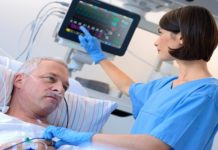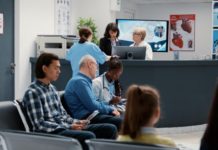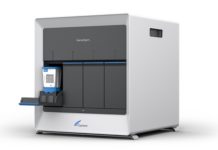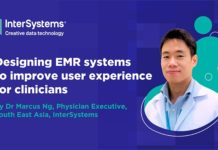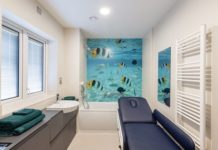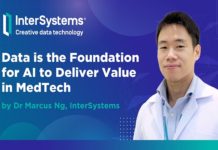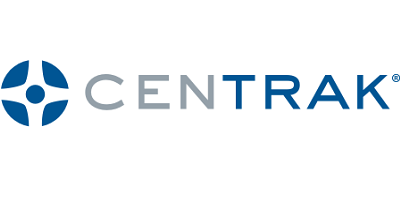Discover the cutting-edge BLE Multi-Mode Platform by CenTrak, designed to transform healthcare operations through real-time location data insights. In this comprehensive article, delve into the innovative features, functionalities, and interoperability aspects of the platform, and learn how it addresses specific challenges faced by healthcare organizations. Explore real-world applications, success stories, and deployment strategies, and find out how CenTrak supports customers every step of the way. Don’t miss the opportunity to register for an upcoming webinar and connect with CenTrak experts to revolutionize your healthcare facility’s operations.
1. What is the name of the new hardware platform being announced by CenTrak?
The latest hardware platform unveiled by CenTrak, aptly named BLE Multi-Mode, marks a significant advancement in RTLS technology. This innovative solution builds upon CenTrak’s esteemed legacy of Wi-Fi Multi-Mode, replacing Wi-Fi with BLE as a more feature-rich and cost-effective technology for a more versatile RTLS hardware platform.
2. Can you provide an overview of the key features and functionalities of the new platform?
Scalability and Adaptability: The new platform boasts a hybrid architecture seamlessly transitioning between BLE and all CenTrak Clinical-Grade Locating (CGL) environments. CGL is defined as certainty-based locating with room- to sub room-level accuracy. This flexibility in location granularity empowers customers to harness mixed RTLS infrastructure within a single building or across an entire hospital campus, effectively balancing affordability and precision according to the specific needs of each department.
Innovative Tag and Badge Design: Our platform offered the unique opportunity to design new multi-mode tags and badges that are meticulously crafted to meet to the unique needs of healthcare facilities. By incorporating the latest industry best practices and innovations, we ensure unparalleled performance and user experience. For instance, in applications such as staff duress, our badges feature a dedicated button with a recessed design, minimizing the risk of accidental presses and false alarms. Additionally, audible and visual indicators on the badge can be customized to notify users when a duress alert has been acknowledged by the system, providing reassurance that help is on the way. Our LED indicators also offer real-time visualization of remaining battery life, empowering staff to begin each shift with confidence, knowing that safety is always within arm’s reach.
Enhanced Battery Life: BLE Multi-Mode devices feature extended battery life, providing sustained functionality and reducing the need for frequent recharging or replacement, thereby minimizing disruptions to operations.
Efficient Management and Updates: Enjoy fast, centralized management facilitated by easy over-the-air firmware updates. Bidirectional communications over BLE offers swift deployment of enhancements and patches, maintaining peak performance and security across the entire RTLS ecosystem.
3. How does this platform differ from existing solutions in the market?
What sets this platform apart from existing solutions is its singular device that effortlessly transitions between different locating networks and technologies. Healthcare facilities benefit from the flexibility to minimize or eliminate hardware installation and networking complexity or opt for in-room location devices. Whether it’s infrared, low-frequency RF, or Bluetooth Low Energy, this all-in-one device ensures seamless operation across various environments, offering unmatched versatility and adaptability.
Also, unlike single-point solutions on the market, the BLE Multi-Mode platform supports a wide array of RTLS use cases from asset tracking and staff duress to hand hygiene compliance monitoring, nurse call automation, infant protection, wayfinding, and more – all on a single, scalable system architecture. This comprehensive coverage tailors to diverse clinical and operational requirements across hospitals and health networks.
4. What specific challenges in the healthcare industry does this platform aim to address?
Recognizing the significance of location data and the transformative outcomes it offers, the platform aims to tackle the pressing need for healthcare facilities to swiftly embark on their RTLS journey while minimizing disruption to hospital operations. Its deployment is designed to be low-impact, ensuring a smooth transition with easy scalability for future needs. Additionally, some facilities may be deterred by the potential costs associated with installing and maintaining additional systems. BLE Multi-Mode mitigates this concern by facilitating “tag only” hardware deployments, specifically tailored to BLE-supported use cases, thus offering a cost-effective solution without compromising on the value of RTLS insights. As healthcare leaders begin to reap the benefits of their initial RTLS programs, they can seamlessly scale up to more advanced use cases requiring finer location granularity.
5. How does the platform leverage location data capabilities to enhance healthcare operations?
Location data can support healthcare operations in a variety of ways. For example:
- Asset Tracking and Management: The platform optimizes asset tracking and management, reducing the time spent searching for equipment and allowing staff to focus more on patient care. It facilitates easy location identification of mobile medical equipment, streamlines asset management workflows, and minimizes equipment loss. By optimizing asset utilization and ensuring regulatory compliance through efficient preventative maintenance procedures, healthcare facilities can maximize operational efficiency.
- Staff Safety: Through real-time map views, immediate alert notifications, and continuous location updates during duress events, the platform prioritizes staff safety. Wireless duress calls are initiated with a simple button press on the staff member’s wearable device, promptly notifying appropriate personnel of their precise location. Reliable and accelerated response times during emergencies create a secure environment for staff, fostering a culture of safety.
- Hand Hygiene Compliance: Direct Observation is far too labor-intensive, expensive, and typically only accounts for less than 5% of all hand hygiene events. CenTrak RTLS identifies opportunities for performing hand hygiene, monitors all hand hygiene events, and delivers actionable insights to staff, eliminating time spent on manual data entry and building compliance reports.
- Workflow automation: From automating nurse call cancellations upon confirmed staff presence to offering a comprehensive view of patient and staff interactions and movement within the facility, the platform facilitates workflow automation. With visibility to daily to hourly averages of individual milestones, healthcare facilities gain insights to identify anomalies or bottlenecks in processes. Armed with this information, areas for improvement can be addressed proactively, and the impact of process changes can be measured effectively, leading to continuous optimization of operations.
Beyond the highlighted functionalities, the platform offers a myriad of additional features and capabilities tailored to meet the evolving needs of healthcare operations, ensuring comprehensive support for various aspects of facility management and patient care.
6. Can you elaborate on the interoperability aspects of the platform? How does it integrate with existing systems and technologies?
The CenTrak platform shines through its seamless integration capabilities. Through the utilization of the CenTrak BLE Multi-Mode badge, the platform effortlessly integrates with established CenTrak systems and taps into BLE-enabled networks offered by leading vendors like Cisco Systems and HPE Aruba Networking for location information and data communications. Furthermore, CenTrak goes beyond the basics by fostering integration with a diverse array of solution providers. This includes seamless collaboration with nurse call platforms, CMMS (Computerized Maintenance Management Systems), EHR (Electronic Health Records) systems, patient infotainment solutions, and more. By bridging these disparate systems, CenTrak empowers healthcare facilities to infuse their existing solutions with invaluable location data, thereby optimizing workflows and driving operational efficiency to new heights.
7. What is the deployment model for this platform, and how does it contribute to cost-effectiveness?
The platform offers a versatile deployment model, allowing customers to either leverage CenTrak networks or utilize their existing BLE-enabled hospital networks and infrastructure. This flexibility not only expedites the deployment process but also significantly reduces the hardware costs typically associated with RTLS implementations. A multi-mode approach allows facilities to “start small” with entry-level use cases and strategically plan to grow their system over time to address the dynamic priorities and challenges inherent in healthcare. This seamless progression to embrace more sophisticated use cases, such as nurse call automation, with enhanced location precision ensures a sustained value proposition for the system while highlighting its innate adaptability to evolving healthcare demands and technological advancements.
8. Are there any case studies or success stories demonstrating the impact of this platform on healthcare organizations?
As we progress towards the general availability of the BLE Multi-Mode solution this spring, the platform is already demonstrating its value among a limited user base in the streamlining of clinical workflows and enhancing staff safety. With customer and market feedback as central pillars of our meticulous product innovation process, we are confident that our platform not only meets but exceeds user expectations, delivering solutions that anticipate and surpass their needs.
9. How does CenTrak envision the adoption of this platform across different types of healthcare facilities?
CenTrak envisions widespread adoption of its platform across a spectrum of healthcare facilities, ranging from expansive Integrated Delivery Networks (IDNs) seeking standardized technological solutions for enterprise-level RTLS deployments, to smaller hospitals, outpatient facilities, and specialty clinics with targeted needs such as asset tracking or staff duress alerts.
By harnessing CenTrak’s BLE Multi-Mode RTLS, healthcare facilities unlock a highly adaptable solution tailored to the diverse needs of various healthcare environments. This includes catering to the unique requirements of individual buildings, units, or floors within a single facility or across an entire health system. With a CenTrak network seamlessly integrated across multiple hospitals under a single IDN, equipment, patients, and staff utilizing CenTrak location sensors are effortlessly recognized system-wide at any location. Additionally, software and system configurations are centrally managed across the enterprise, enhancing operational efficiency. The transformative impact of RTLS yields tangible benefits such as improved patient outcomes, heightened staff morale, and optimized operational performance across the entire healthcare continuum.
10. What support and resources will CenTrak provide to customers who are interested in implementing this platform?
Our goal is to help healthcare facilities derive actionable insights from their RTLS – leading to transformative changes and strengthening their leadership position in the healthcare industry. Drawing on our extensive experience deploying Real-Time Location Systems (RTLS) in over 2,000 healthcare institutions worldwide, CenTrak’s team of clinical consultants, hospital operations experts, and business analysts offer comprehensive support and resources to customers interested in implementing our RTLS platform. Their expertise helps guide customers through the right implementation strategy and technology deployment model best suited for their facility.
Going beyond traditional training and go-live assistance, the CenTrak EngageSM program provides a thorough evaluation of current processes, analyzes baseline data, and details projected value assessments according to the strategic use case deployment model and roadmap. Governance models, steering committees, and change management processes are established to guide the creation of new or revised Standard Operating Procedures (SOPs) tailored to RTLS use cases, and a strong partnership with the health system is also formed in the co-development of training tools, communication plans, and branding strategies to facilitate user adoption. CenTrak also identifies the metrics required for sustained success and provides ongoing documentation of organizational ROI.
11. Can you provide information about any upcoming webinars, demonstrations, or training sessions related to the new platform?
From 2 – 3 P.M. ET on Tuesday, May 14, CenTrak is hosting a webinar discussing strategies to develop an effective staff safety program in hospitals. Amid ongoing and unprecedented staff shortages and workplace violence in healthcare, creating a safe environment is more critical than ever before.
Mary Jagim, principal consultant at CenTrak, a seasoned staff nurse and emergency department manager with over two decades of experience and knowledge as the former President of the Emergency Nurses Association, will share the latest best practices for implementing violence prevention programs, delve into two healthcare worker safety bills currently in congressional committees, and discuss initiatives nursing organizations are undertaking to offer support. Gain additional insights from CenTrak product managers, Nicholas Adriance and myself, as we share cutting-edge real-time location system solutions designed to elevate the safety of your staff.
Learn more and register here: Registration page
12. How can interested parties get in touch with CenTrak for further inquiries or to schedule a consultation with an expert?
- Website: centrak.com
- Linkedin: https://linkedin.com/company/centrak
Author: Kevin Paroda, global segment manager, acute care, CenTrak






